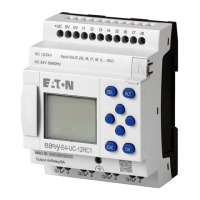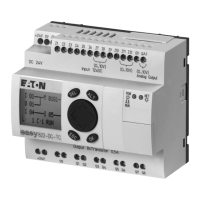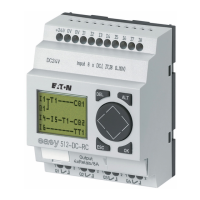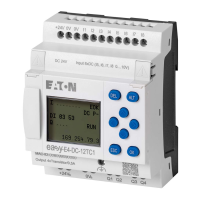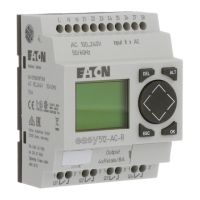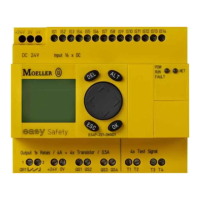6. Function blocks
6.1 Manufacturer function blocks
6.1.3.8 PW - Pulse width modulation
General
easyE4 base devices provide two function blocks for pulse
width modulation PW01…PW02.
The potential application area for PW function blocks con-
sists of any application in which an actuator system cannot
be driven with an analog system, but only digitally with ON
and OFF states instead.
PW function modules are used primarily to drive easyE4
devices with transistor outputs.
However, PW function blocks can also be used with easyE4
devices featuring relay outputs. Due to the relay's ON and
OFF times, a longer period duration and a longer minimum on
duration should be selected than for easyE4 devices with tran-
sistor outputs.
Operating principle
The period duration of the signal stays constant. You define the period duration at the
PD input. The PW function block generates a rectangular function signal with an on
and off duration. This on duration is proportional to the manipulated variable at input
SV.
You can also define the minimum on duration at the ME input.
A hardware output is assigned to each function block:
PW01 -> Q01, PW02 -> Q02
The function block causes the direct output of the calculated value at the hardware
output.
If you use a PW function block with its permanently assigned
Q1 or Q2 output, you shouldn't make any additional asso-
ciations of these outputs in the program.
A status change at Q1 or Q2 that is caused by the circuit dia-
gram is suppressed in favor of the higher priority status
change caused by the function block.
DANGER
UNFORESEEABLE SWITCHING STATES AT OUTPUT
When using the PW function block, strictly observe the separate
assignment of the outputs if other hardware-dependent function
blocks are used, such as the PO function block.
If this is not observed, unforeseeable switching states may occur at the output con-
cerned.
easyE402/24 MN050009ENEaton.com
367
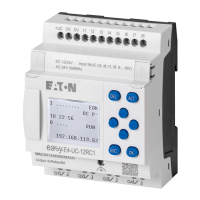
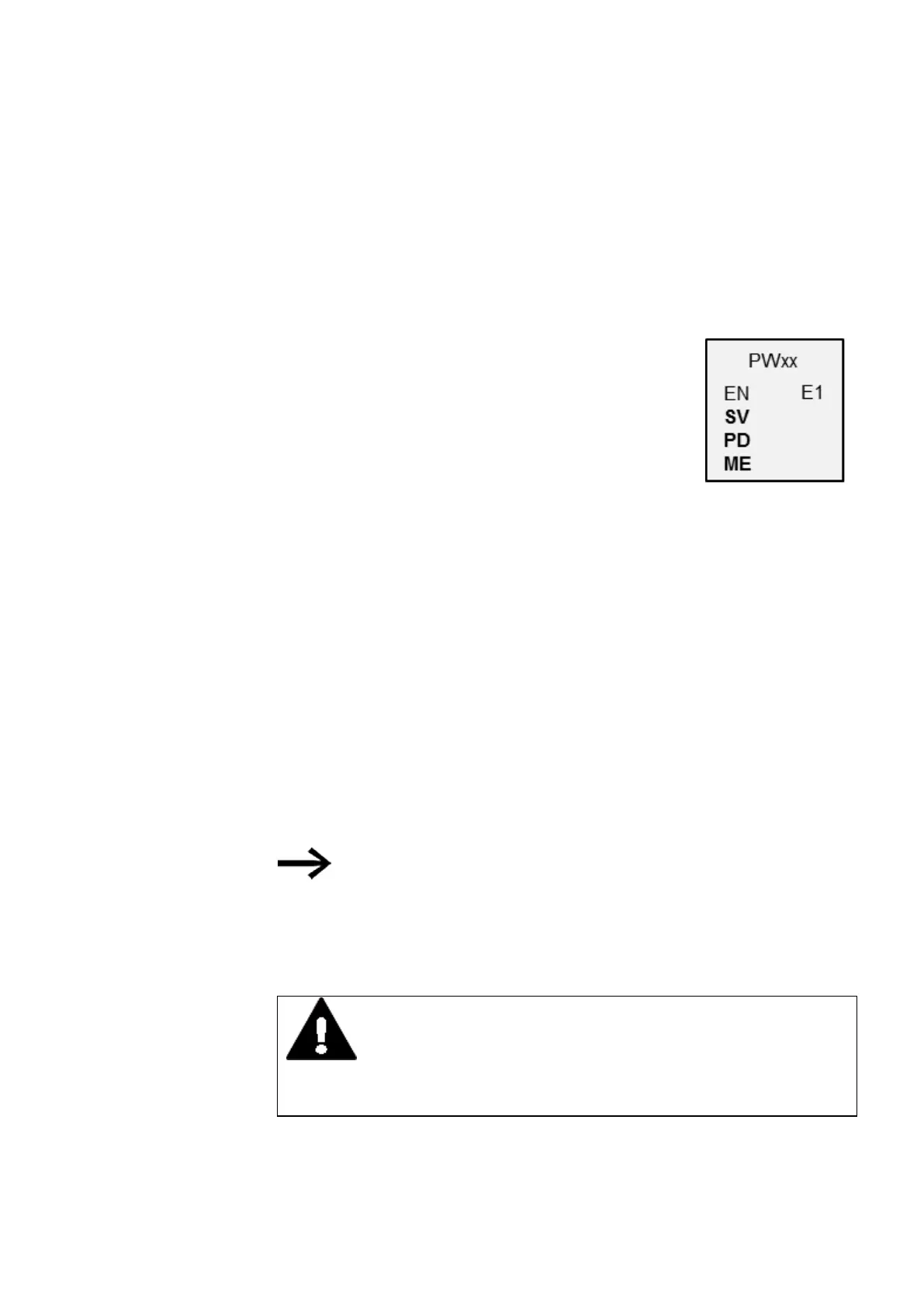